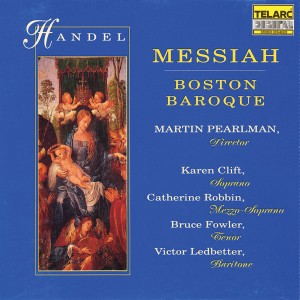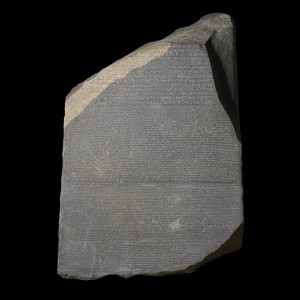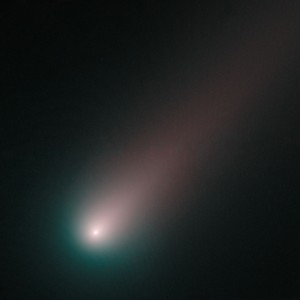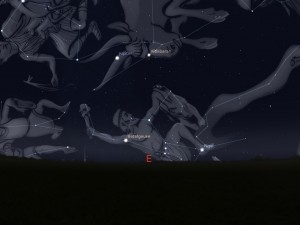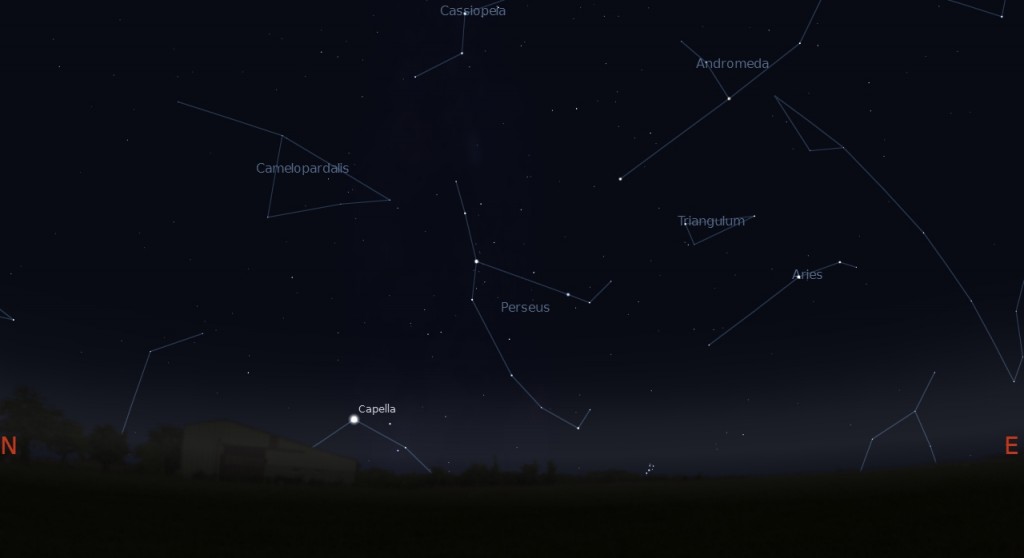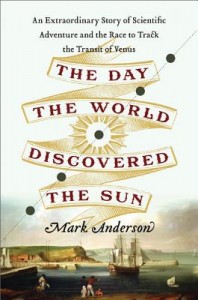O star of wonder, star of night,
Star with royal beauty bright,
Westward leading, still proceeding,
Guide us to thy perfect light.
If it’s not stormy, fall and winter nights can be excellent for star gazing. It’s dark early and sometimes the skies can be crisply clear. To give your star gazing muscles a gentle stretch, try looking for the brilliant stars that make up the constellation Orion, The Hunter.
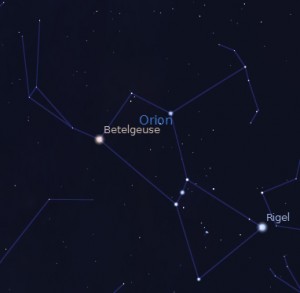 For a bigger challenge, look for M42, the Messier object called the Great Orion Nebula. On a really clear and dark night you might see it with the naked eye as a bit of a blur. With binoculars or a small telescope you’ll have more luck. Look below Orion’s belt at his “sword” to find the nebula (see squared area below).
For a bigger challenge, look for M42, the Messier object called the Great Orion Nebula. On a really clear and dark night you might see it with the naked eye as a bit of a blur. With binoculars or a small telescope you’ll have more luck. Look below Orion’s belt at his “sword” to find the nebula (see squared area below).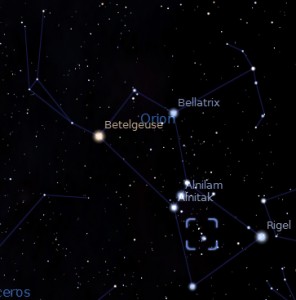 Related note: I hope the Orion launch goes smoothly tomorrow after being cancelled today. I don’t think I can handle getting up at 7:05 a.m. ET (4:05 a.m. my time) to see if it works but good luck, NASA!
Related note: I hope the Orion launch goes smoothly tomorrow after being cancelled today. I don’t think I can handle getting up at 7:05 a.m. ET (4:05 a.m. my time) to see if it works but good luck, NASA!

